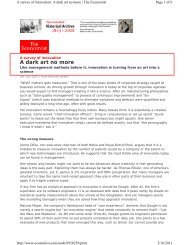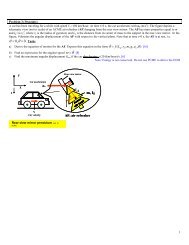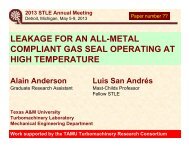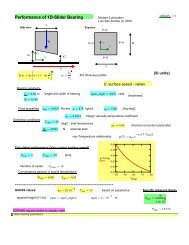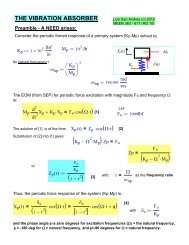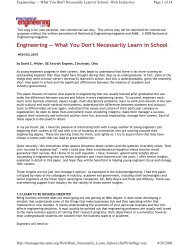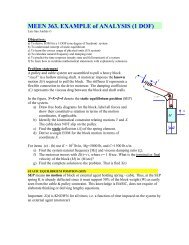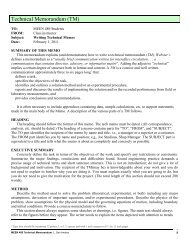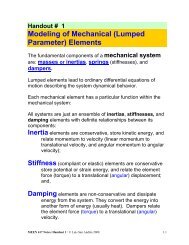TRC-SFD-1-07 - Tribology Group - Texas A&M University
TRC-SFD-1-07 - Tribology Group - Texas A&M University
TRC-SFD-1-07 - Tribology Group - Texas A&M University
You also want an ePaper? Increase the reach of your titles
YUMPU automatically turns print PDFs into web optimized ePapers that Google loves.
A review of publications related to parameter identification of non-linear systemsfrom dynamic force excitation tests is of interest. As detailed in the 2006 <strong>TRC</strong> report [3],the mechanical seal-<strong>SFD</strong> force response is non-linear due to dry friction interactions atthe seal interface. Previously, the system parameters were identified in a two stepprocedure with the mechanical seal friction force first identified from circular orbits testsprior to pumping oil through the damper (i.e. dry system).Rice and Fitzpatrick [9] present one the first formal techniques tailored to identifyparameters in non-linear mechanical systems using random force excitations. Theprocedure is based on a cross-spectra frequency analysis to decouple the linear and nonlinearforce contributions of the mechanical system using residual coherence functions[10]. Non-linear effects are modeled as non-linear inputs with linear operators on amultiple-input/single output transfer function model. The method demonstrates to berobust and computationally light. However, non-Gaussian errors associated to multipleinput/outputsystems could not be quantified. Thus, a series of tests using different levelsof force excitation are needed to validate the identified parameters.Rouvas et al. [11] present the application of spectral density methods to identifylinearized force coefficients in fluid film bearings. The test system is excited with impactloads and the bearing force coefficients identified from averaging 200 tests repetitions.The results obtained with power spectral density formulation are similar to those obtainedby averaging the data in the time domain, provided that the time data of each repetition isnot shifted with respect to each other. The authors validate the use of the power spectraldensity methods to reduce errors due to signal noise and averaging in the time domain.Rice and Xu [12] present a general identification method for non-linear systems basedon the representation of the system response in terms of the Volterra expansion in thefrequency domain. The method employs force excitations with identical frequencyspectra at different amplitude levels to decouple the linear and non-linear responses in thefrequency domain. The parameters are identified from each decoupled response using astandard least-squares technique. The authors also present an application of the techniqueto identify the parameters of an insulation material from test data obtained in actualexperiments.Adams et al. [13] present a frequency domain technique to simultaneously estimatethe linear frequency response matrix and the non-linear parameters of a mechanical9





